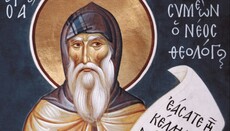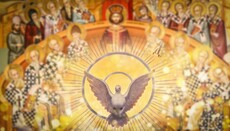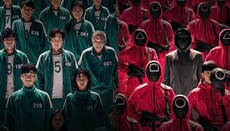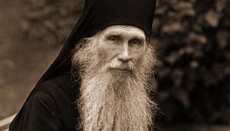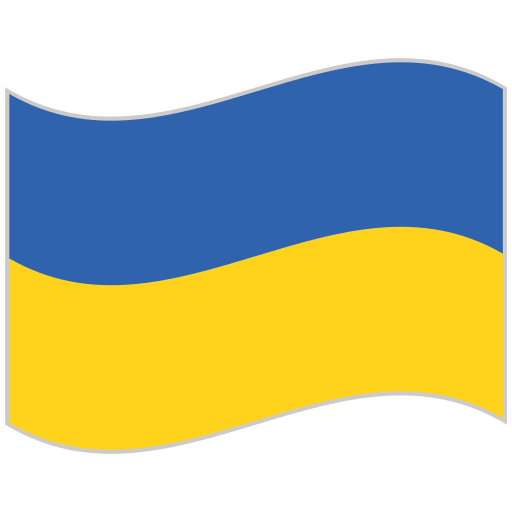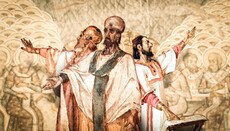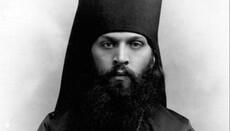"IX" Ecumenical Council: The doctrine of the Uncreated Light
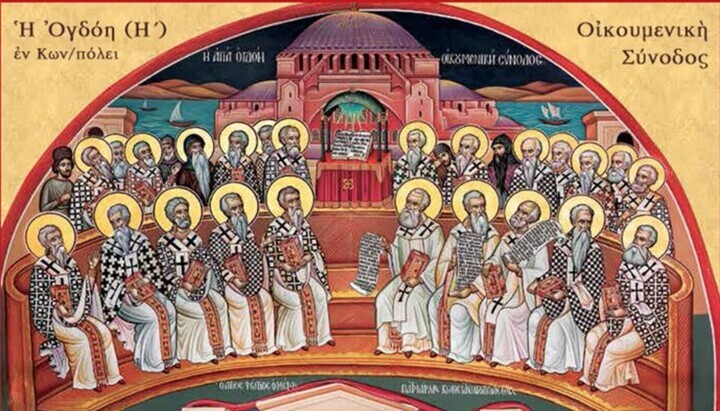
There are even fewer grounds to recognize this Council as Ecumenical than the Eighth Council of 879-880. However, its decisions are no less significant than those of the generally accepted Ecumenical Councils.
Background
This Council, like many previous Ecumenical Councils, and especially the Seventh Council, which approved iconoclasm, showed how theological disputes are overlaid with political and personal aspects, which makes it difficult to resolve these disputes at their core. During the period of iconoclasm, many from both the iconoclast and iconophile parties adhered to their respective teachings not because they were convinced of their rightness and truth but rather to distinguish themselves and criticize their political opponents. A similar situation occurred in the 14th century in Byzantium. To understand what transpired, we must start from afar.
In 1260, Michael VIII Palaiologos became the Byzantine emperor, although in that year he was only the Nicaean emperor as from 1204 onwards the Latins had controlled Constantinople and the Greeks moved their capital to Nicaea. To be even more precise, he was proclaimed co-emperor to the young John IV Laskaris. In 1261, the Greeks were able to capture Constantinople and restore the Byzantine Empire.
Although Michael Palaiologos had no direct role in this, Constantinople was captured on his own initiative with a small force by the Greek commander Alexios Stratigopoulos, who took advantage of the absence of a Latin garrison in the city, which he had accidentally learnt about from merchants. Nevertheless, this strengthened the power and authority of Michael Palaiologos. In the same year, he decided to get rid of his co-emperor. The ten-year-old John IV Laskaris was blinded and exiled. This angered some of the Byzantine elites.
Among them was Patriarch Arsenius, who excommunicated Emperor Michael from communion and for several years refused to forgive him, despite the emperor’s entreaties. Unable to secure the patriarch’s forgiveness, Michael Palaiologos decided to seek it from the Pope.
Besides, two other factors pushed Michael toward an alliance with the Pope. The Western European elites could not accept the loss of Constantinople and were preparing another "crusade". But without the approval of the Pope it was impossible. Furthermore, Michael’s economic and financial policies were rather ineffective. Government expenditures were greatly inflated, and the treasury was empty. The emperor was in desperate need of credit, which the West could provide.
As a result, in 1274, the Union of Lyons was concluded between Rome and Constantinople, by which the Orthodox Greeks recognized the Latin doctrine and the Pope’s authority.
Michael Palaiologos forced the Orthodox hierarchs to sign the union and removed those who disagreed from their sees. For instance, Patriarch Joseph I of Constantinople, who opposed the union, was deposed, and a supporter of the union, John XI Bekkos, was appointed in his place.
However, the union project failed. Some of the hierarchs, the clergy, and the people refused to accept the Union, and the next emperor, Andronikos II, had to declare the Union of Lyons null and void.
The outcome of these events was the creation of two parties in the Byzantine elite: the pro-union and anti-union. It was within the context of this rivalry that the so-called Hesychast disputes arose, which ultimately led to the affirmation of the doctrine of the Uncreated Light.
Chronology of events
Around 1330, an Italian scholar and monk of Greek origin named Barlaam, later known as Barlaam of Calabria, arrived in Constantinople. He quickly gained favor at court, with Emperor Andronikos III Palaiologos appointing him as a professor at the university (a prestigious position at the time) and as the abbot of the Monastery of the Savior in Thessalonica. The emperor also began entrusting him with delicate diplomatic missions to negotiate with the Roman Curia about a possible union, which once again became a pressing issue for the Byzantine rulers.
As one might easily guess, Barlaam was a representative of the pro-union party.
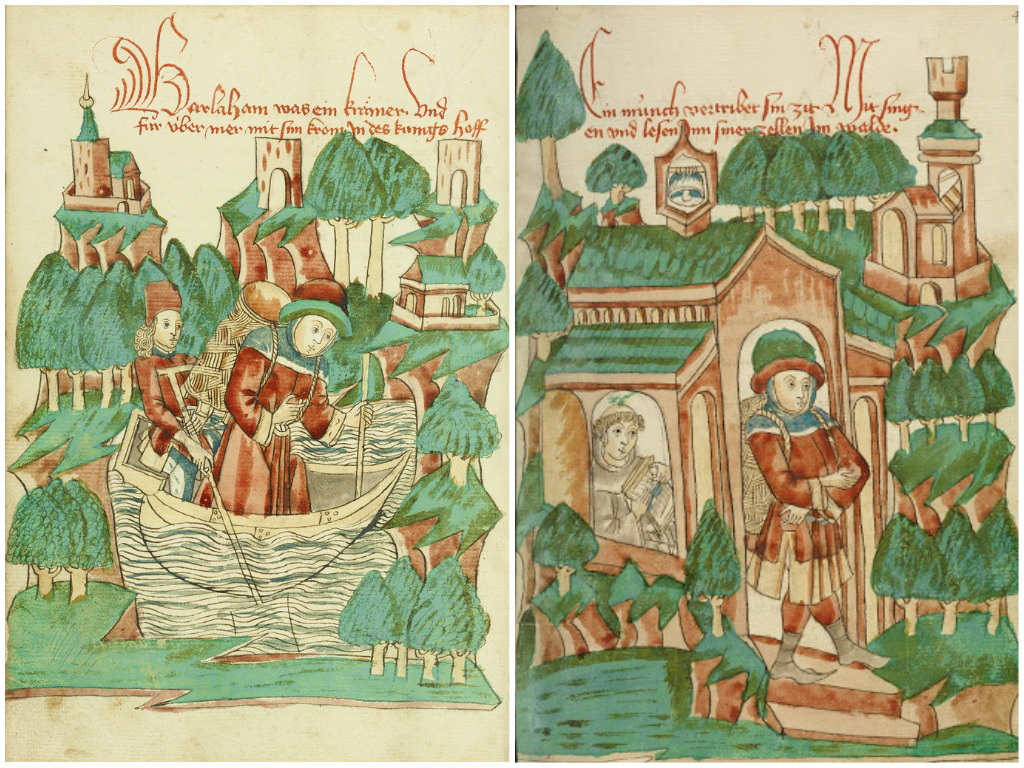
Barlaam was an Orthodox monk, but having grown up in the West, he became a representative of the Western monastic tradition. Firstly, Barlaam did not understand the contemplative aspect of Eastern monasticism (the Western tradition was primarily active), and secondly, he was convinced that God is incomprehensible and that a person cannot have direct mystical communion with Him.
Having visited Mount Athos and familiarized himself (rather superficially) with the practice of Hesychasm, as well as with Eastern monasticism in general, Barlaam became indignant. In his view, focusing the mind in prayer and the real reception of the Holy Spirit by monks was a Messalian heresy and contradicted the teaching on the incomprehensibility of Divinity.
Messalianism was widespread in Syria and Asia Minor in the 4th–6th centuries, and in Syriac-speaking Persia in the 7th century. Messalians taught that after the fall, a demon, which could not be cast out even through the sacrament of Baptism, lived in a man. One can get rid of it only by strict asceticism and prayer. This is what he saw in the Athonite monks, which, of course, was his delusion.
Barlaam wrote several treatises against Hesychasm, attempting to prove the created nature of the Light of Tabor and the Light that the monks spiritually contemplate in their illuminations. He mocked the Hesychasts, calling them "navel-gazers" because, in their spiritual exercises, they would lower their heads and try to synchronize their breathing with the words of the prayer spoken mentally. This, in itself, shows the superficiality of Barlaam’s understanding of Hesychasm, since this method of prayer is purely technical and holds no special importance.
The Synod of Constantinople and the Patriarch found the accusations raised by Barlaam unfounded and ordered him to leave the monks alone. But Barlaam did not relent.
The Athonite monk Gregory Palamas defended the Hesychasts.
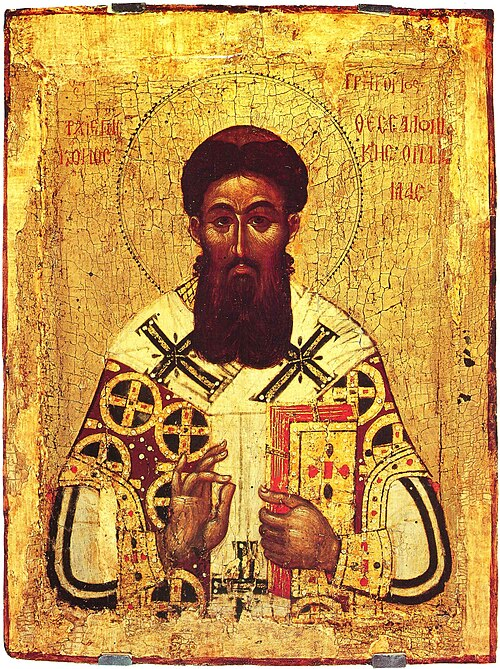
St Gregory Palamas came from a noble Byzantine family and was raised at the imperial court. A brilliant secular career awaited him, but in 1316, at the age of twenty, he withdrew to Mount Athos and devoted himself to ascetic life, embracing Hesychasm, the very tradition that Barlaam of Calabria opposed.
At the end of 1337, St Gregory Palamas arrived in Thessalonica, where he met with Barlaam many times, attempting to reconcile him with the monks through exhortation. These efforts proved unsuccessful. In response, St Gregory wrote three treatises in defense of those who engage in silent prayer ("Triads: In Defense of Those Who Practice Sacred Quietude"), in which he explained the essence of Hesychastic prayer, outlined the true and saving knowledge of God received through Grace, presented the doctrine of deification, and described the Light of Tabor as the uncreated Energy of God. He also formulated the distinction between the unknowable God’s Essence and the knowable Energies.
In 1340, he also requested prominent Athonite monks to sign the so-called "Hagioretic Tomos", which refuted Barlaam's ideas.
The doctrine concerning the distinction between God’s Essence and the Energies gave Barlaam grounds to accuse the Athonite monks of dualism. This also reveals either a superficial acquaintance with this teaching or a bias on his part.
In 1341, a council was convened in Constantinople, where Barlaam acted as the accuser. However, Gregory Palamas and the Athonites, citing the Holy Scriptures and the teachings of the Holy Fathers, not only justified themselves but also denounced Barlaam’s delusions.
The Council approved St Gregory Palamas' teaching that God, unknowable in His Essence, reveals Himself through such Energies as the Light of Tabor, which are directed towards the world and accessible to human perception, yet are uncreated. Barlaam was condemned and forced to repent, which was hardly sincere.
The Council decided to burn all his writings and to cease further disputes on these topics as bringing confusion into the Church.
But the controversy did not stop, even though Barlaam returned to his native Calabria, converted to Catholicism and later became bishop of Gerace.
As had happened before, after the 1341 Council, Barlaam’s rather than Gregory's teaching prevailed for a time, and his followers began to defend it. Among them were the Bulgarian monk Akindynos, the philosopher Nicephoros Gregoras, and Patriarch John XIV Kalekas. They influenced Emperor Andronikos III Palaiologos, who was inclined to condemn Gregory. However, at the end of 1341, Andronikos died, and his son, the young John V Palaiologos, was proclaimed emperor, with the military leader John Kantakouzenos as regent.
However, the circle surrounding John V – his mother Anna of Savoy, the commander of the navy Alexios Apokavkos, and Patriarch John XIV Kalekas – conspired against Kantakouzenos. He was declared a traitor, his estates were confiscated, and his supporters were exiled or imprisoned. Yet, John Kantakouzenos managed to gather supporters, raise an army, and fight for power. Initially, he suffered setbacks, which strengthened the position of John V's supporters, and they began persecuting Gregory Palamas and his followers.
By 1344, a council was held in Constantinople, at which Gregory was condemned, anathematised, and imprisoned.
But in 1347, John Kantakouzenos emerged victorious, which allowed him to become co-emperor with John V Palaiologos, taking the name Emperor John VI Kantakouzenos. According to the terms of the agreement, he became the principal co-emperor for ten years, receiving full power. Naturally, he began supporting the Palamite party as a counterbalance to his political opponents. Patriarch John XIV Kalekas was deposed and succeeded by Isidore I, a supporter of Hesychasm, while Gregory Palamas was released from prison and elected Archbishop of Thessalonica.
In 1351, a Council, which finally confirmed the teachings of St Gregory Palamas, was convened. Most consider it the Fifth Local Council of Constantinople, but some scholars and hierarchs, mostly from the Greek Churches, call it the Ninth Ecumenical Council.
The Council was attended by Emperor John Kantakouzenos, Patriarch Callistus I, 25 metropolitans, 3 representatives of metropolitans, 6 bishops, the Senate members, abbots and archimandrites of Constantinople’s monasteries, priests, monks, and lay representatives.
As for representatives of other Local Churches, it is known for certain that the Council included Arsenios of Tyre, who, by the way, was an anti-Palamite, representing the Patriarch of Antioch.
The teachings of St Gregory Palamas
The key points of the teachings of St Gregory Palamas, as approved at the Council, can be summarized as follows:
- God is unknowable in His Essence, and one cannot speak of His Essence even as a speculative category. This is the difference between the Orthodox teaching and Latin scholasticism, where the Essence of God is considered as a category;
- God is knowable through His Energies, which are the outward manifestations of His Essence;
- God is present in creation through His Energies, but not through His Essence;
- The world itself is created by God’s creative will, that is, by His Energies;
- In the Sacrament of Communion, and through the fulfilment of God's commandments (asceticism), human energies are "aligned" with the Energies of God;
- Synergy (Gregory Palamas’s term), i.e. the joint action (energy) of the Divine and human will, is necessary for the salvation of man;
- Mas can receive the Grace of God and become a co-participant in the fullness of Divine life in its uncreated manifestation through their action in man;
- This participation embraces the entire human nature, including the body, meaning that man can, through his physical nature, perceive (see) the Uncreated Light, as the apostles did on Mount Tabor;
- As the body also participates in Divine life, it requires ascetic practices developed over the centuries by Hesychast monks.
The importance of the Constantinople Council of 1351
The significance of the 1351 Council and the affirmation of Gregory Palamas's teaching on the Uncreated Light goes far beyond the Hesychast disputes of the 14th century. The fact is, in almost all religions, it is taught that through various initiations, occult practices, asceticism, meditation, and so on, a person can be illuminated by a certain light. This theme is thoroughly explored in the book “The Myth of the Eternal Return” by the renowned religious scholar Mircea Eliade. To provide an example, here are several quotes describing the experience of seeing such a light in various religions:
• Shamanism: The phenomenon of light is called "kaumanek" – this is "a mysterious light that the shaman suddenly feels in his body, inside his head, in the very core of his brain, an indescribable beacon, a luminescent fire, granting him the ability to see in the dark both in the literal and figurative sense, for now, he can even see in the dark with his eyes closed and foresee things and events of the future, hidden from other mortals; thus, he can learn about both the future and the secrets of other people."
• Hinduism: "The light is identical with being and immortality... Contemplating this highest Light, beyond the Darkness, we reach the Sun, the god of gods... At the moment of death, the soul ascends along the rays of the Sun. It approaches the Sun, the 'Doors of the World'. Those who know can enter, but for those who do not, the Door is closed... The one who gains this knowledge not only acquires information but also adopts a new, higher mode of existence."
• Buddhism: "The sign of the appearance of Brahman is 'The Light that rises, and the glory that shines'... Through the practice of contemplation and the absence of all impure desires, the gods reach a state of samadhi, known as 'the flash of fire,' and their bodies become more radiant than the Sun and the Moon. This astonishing brilliance is the result of the perfect goodness of their hearts."
In his descriptions of the experience of mystical light, Mircea Eliade also includes testimonies from the Old and New Testaments, as well as the experience of Orthodox Hesychast monks, and even touches upon the teachings of St Gregory Palamas. For him, all these things are of the same order. This raises the question: if people from many religions see light, then what is the truth of Orthodoxy?
The teaching of Gregory Palamas provides an answer to this question: Orthodox ascetics see the Uncreated Light, which is an outward manifestation of the Essence of the Triune personal God. In contrast, followers of all other religions see, at best, created light ("And God said, 'Let there be light.' And there was light" (Gen. 1:3)), that is, the light of the first day of creation, before the sun and stars appeared. In the worst case, it is demonic delusion ("... Satan himself masquerades as an angel of light..." (2 Cor. 11:14)).
The difference between the Orthodox experience of receiving the Uncreated Light and the experience of mystical light in other religions is most fully described in the book “A Night in the Desert of the Holy Mountain” by Metropolitan Hierotheos (Vlachos). Although it refers to illuminations received through yoga, these words are generally applicable to all non-Orthodox mystical experiences. Let us quote this passage in full.
“ - I would also, Gerondas, like you to explain to me and expand more on what I was saying earlier, on the differences between the Jesus prayer and the joga, and for you to show me its superiority over the other eastern religions, since you offer great experience.
- The subject is very big, my son, and one could say many things about it. From what I said previously, the following stand out:
Firstly: In the Jesus prayer, faith in God, Who created the world and Who governs it and loves it, is ex-pressed strongly. He is an affectionate Father who cares about saving His mortal creation. Salvation is attained "in God". For this reason, when we pray we implore Him by saying: "Have mercy on me". Self-redemption and self-divinization are far from the athlete of noetic prayer, because this is the sin of Adam, the sin of the Fall. He wanted to become God outside God's plan for him. Salvation is not attained "through ourselves and does not emanate from ourselves", as the human philosophical systems claim, but is attained "in God".
Secondly: We are not struggling to meet an impersonal God through the "Jesus prayer". We do not seek our elevation to "absolute nothingness". Our prayer focuses on the personal God, the Godman Jesus, for this reason we say "Lord Jesus Christ, Son of God". Divine and human nature meet in Christ, in other words in the fullness of the divine Word and all of humanity the perfection of divinity dwells in him in the flesh. Therefore, anthropology and soteriology (teaching about man and his salvation) in Orthodox monasticism are closely connected with Christology. We love Christ and keep His commandments. We place great importance on this matter. We insist on the keeping of the commandments of Christ. He Himself said: "If you love me, you will keep my commandments". (John 14. 15) By loving Christ and by keeping His commandments we are united with the entire Holy Trinity.
Thirdly: We do not reach a state of pride through unceasing prayer. The philosophical systems you men-tioned before are possessed by pride. We acquire the blessed state of humility through the Jesus prayer. We say "Have mercy on me", and we consider ourselves the worst of all. We despise none of our brothers. The athlete of the Jesus prayer is a stranger to every sort of pride. And whoever has pride is foolish.
Fourthly: Salvation, as we said before, is not an abstract notion but union with God, the Holy Trinity in the person of our Lord Jesus Christ. This union, however, does not efface the human factor. We are not assimilated, since we are ourselves also persons.
Fifthly: As prayer develops, we acquire the ability to discern error. We can see and distinguish the movements of the devil but at the same time the energies of Christ. We recognise the deceit of the devil who, many times, changes his form even into an angel of light. We distinguish, therefore, good from evil, the uncreated from the created.
Sixthly: The struggle for the "Jesus prayer" is connected with the cleansing of soul and body from the corrupting effect of passions. We do not aim at reaching Stoic apathy but we strive to attain the dynamic state of dispassion, which means that we do not aim at the mortification of passions but at their transformation. Without dispassion one cannot love God and be saved, but because this love has been corrupted and distorted, we strive for its transformation. We fight to transform the distorted states that the devil created in us. We cannot be saved without this personal struggle which is achieved with the help of the grace of Christ. According to St. Maximos, "Spiritual Knowledge without practical life (purification of heart) is the theology of the demons".
Seventhly: We do not try to guide the nous (noetic faculty) to absolute nothingness through the "Jesus prayer", but to turn it to the heart and bring the grace of God into the soul, from where it will spread to the body also. "The Kingdom of God is within us" (Lk. 17. 21). According to the teaching of our Church, it is our way of thinking, according to the flesh, which is bad and not our body. We must not try to get rid of "the garment of the soul", as the philosophical systems claim, but we must try to save it. Additionally, salvation means redemption of the whole of man (of the soul and the body). We do not aim, therefore, at the destruction of the body, but we fight the worship of it. Neither do we want the destruction of life. We do not aspire to reach a point where we do not desire life so that suffering ceases. We practise the Jesus prayer because we thirst for life and we want to live with God eternally.
Eighthly: We are not indifferent to the world around us. The various systems you mentioned before avoid facing people's problems, so that peace and impassability can be maintained. We have in mind the oppo-site: we pray unceasingly for all. We are suppliants for the whole world. Moreover, salvation is union with Christ while we are in communion with other persons. We cannot be saved just by ourselves. A joy which is only ours, without being joy for other people as well, is not true joy.
Ninthly: We do not place great importance on psychosomatic techniques and on the various postures of the body. We consider some of them as assisting the concentration of the nous on the heart, i.e. which in essence do away with all of this. I repeat, we do not strive for impassability, a negative state, but for the acquisition of Divine grace...”
To consider the 1351 Council Ecumenical or not?
In conclusion, let us say a few words about whether the Fifth Ecumenical Council of Constantinople can be considered Ecumenical. Some formal signs point to its Ecumenical status, while others do not.
For instance, this Council was convened by the emperor, who took an active part in it and later signed its decrees, making them binding throughout the Byzantine Empire. The Council dealt in detail with an important dogmatic issue. There are indirect indications that the participants considered it to be Ecumenical. It was attended by representatives of at least two Local Churches.
On the other hand, this representation was not universal (it did not include all the Local Churches), nor was this Council recognized as Ecumenical by the next Ecumenical Council. Besides, there is an opinion that after the falling away of the Western, Catholic Church, there can be in principle no Ecumenical Councils, at most – pan-Orthodox.
It seems that the very discussion about granting a particular council the Ecumenical status, as well as disputes about the permissible number of Ecumenical Councils (“no more than seven; the eighth will be the Antichrist’s”), stems from a misunderstanding of the significance of these Councils for the Church.
People want very much to have some external authority, defined by formal criteria, to declare what is right and what is wrong, thus relieving them of the burden of responsibility. They would like to say there are seven Ecumenical Councils, whose decisions are absolutely correct and binding forever and ever. This leads to speculation about the decisions and authority of the Councils.
When it suits us, we declare the specific decisions of Ecumenical Councils as binding, but when it doesn’t suit us, we simply ignore them. For example, nowadays no one pays attention to the prohibition for a bishop to move to another see, the prohibition for women to stay overnight in men's monasteries and vice versa, the requirement for the consent of neighbouring bishops for the election of a bishop, etc.
Much more significant than formal signs is the acceptance of the decisions of a particular Council by the fullness of the Church, the living by these decisions, and the spiritual experience of whole generations in accordance with them. From this perspective, the Constantinopolitan Council of 1351 is no less important than the universally recognised Ecumenical Councils. It affirmed the doctrine of the Uncreated Light, which the Church accepted and confirmed as true for almost 700 years.
Many thousands of monks live their spiritual lives in accordance with this teaching. The spiritual experience of all Orthodox ascetics testifies to the correctness of this doctrine. Therefore, whether to consider the Fifth Council of Constantinople as Ecumenical or not is a personal matter for everyone, but it is impossible to remain Orthodox without acknowledging as true the teachings of Gregory Palamas, which this Council affirmed.
